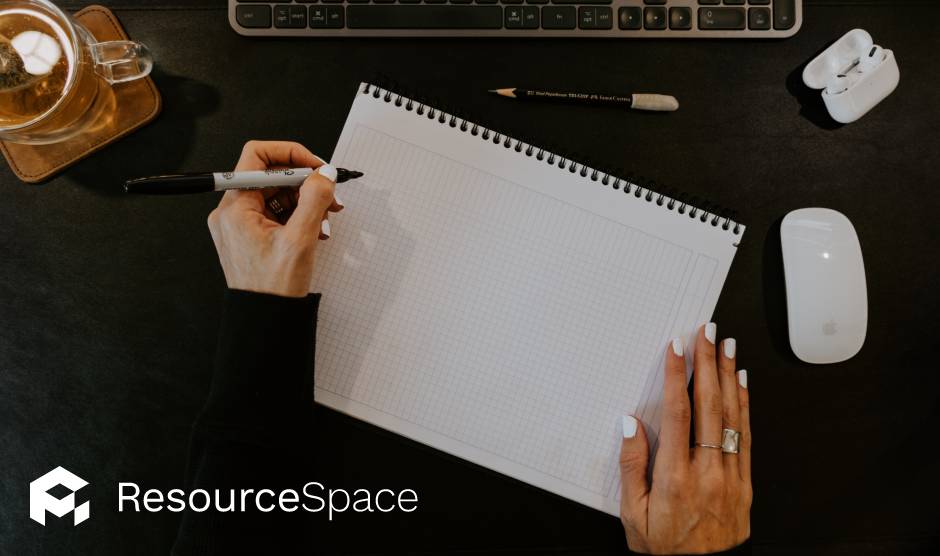
Fairtrade communications staff around the world really appreciate ResourceSpace. It's proven invaluable as a one-stop for sharing and storing all our images and brand assets. I don't know how we'd manage without it!
Blog
20th June 2022

Have you ever heard the phrase, 'garbage in, garbage out'?
It usually refers to computer programmes, but it's actually a useful adage to remember when it comes to briefing graphic designers.
That's because designers, and indeed any creative professions, rely on high quality briefs to create high quality work.
Read on to find out how to brief a graphic designer effectively.
You might be able to sum up what you want a graphic designer to create in a single sentence, but there's so much more information needed in order to produce an asset that's going to be effective.
A graphic design brief should feature all of the technical details, including:
The scope of each graphic design brief will vary, and some of these points might not need to be covered, but this initial work is essential in order to get a clear picture of what's required from the project.
In order to brief a graphic designer effectively, follow these six steps.
Lots of different elements go into a digital asset including colours, imagery, fonts and logos.
These different elements need to be considered for every single brief you create, but by creating set brand guidelines you won't need to repeat your company's font choice every time.
Each design brief should start with a brief overview of your company and brand, including your existing visual identity, as well as the company's mission and culture. This is a great place to link to your brand guidelines.
Creating a document that clearly defines your target market is essential for your marketing strategy, but it's not limited to the big picture, and even graphic designers should know who they're creating content for.
Ask yourselves what the demographics are of your target market (age, gender etc.), what their interests are, lifestyle and professional info, and what part of the world they're from. Location might not sound important, but cultural differences can inform what imagery will resonate with people.
Let's say you need a graphic designer to create a series of featured images for your company blog. You've provided brand guidelines and explained the themes that should be represented by the images. Now you just have to wait for the designer to send back the images, right?
Wrong. Not being specific about the deliverables you want to get back is one of the biggest mistakes companies make when briefing designers.
You need to be clear about the different image dimensions you want, the file format (JPEG or PNG, for example) and whether you want the design files included.
READ MORE: Different image file formats explained
Make it clear from the start how much money you have to spend on the project, and agree on a price before the designer gets to work. Ideally, this price will include at least one round of basic amends. This will avoid a potential awkward conversation with the designer once the project is completed and they send an invoice for more than you expected.
You also need to set out clear milestones - and this should be more than the one final deadline.
Think about the different stages of the project and when you'll need to approve things. Do you want to see some initial concepts before the designer works on the first draft?
There'll also be deadlines you should set for yourself as the client. For example, you might have to share access to your CMS and Digital Asset Management (DAM) platform, examples of what you're looking for or brand assets. If you miss your deadlines for sending these items over, the designer is going to miss their deadline, so it's essential you keep yourselves on track.
Define the communication channels between you and the designer for the duration of the project. If it's someone you work with frequently, maybe it's worth adding them to your internal comms platform. Do you want to discuss design edits over email or by collaborating on a live document of Adobe XD?
You also need to decide how assets should be shared between the two parties. ResourceSpace makes it easy to manage this process, allowing you to set specific permissions and securely share assets.
READ MORE: Problems ResourceSpace solves: Sharing resources
Want an easier way to share briefs, brand guidelines and feedback? Try ResourceSpace for free.
If you're not sure where to start, here’s a example brief for inspiration:
| Field | Example / Notes |
|---|---|
| Project title | “Spring Campaign Posters” |
| Purpose | “To promote our new product line across print and social media channels.” |
| Target audience | “Young professionals aged 25 to 40 in the UK.” |
| Visual references | “We like the bold colours in the Nike 2024 ads. Avoid overly corporate styles.” |
| Deliverables & formats | “A3 poster (PDF), Instagram graphic (1080x1080 JPG), editable PSD files.” |
| Deadline & milestones | “Draft by 15 Sept, final by 22 Sept. One round of amends included.” |
| Budget | “£1,200 total, including one round of feedback.” |
| Brand guidelines | “Use our existing colour palette and font. Logo files linked here.” |
| Feedback contact | “Contact: Jane Smith, Marketing Manager – jane@company.com” |
#GraphicDesign
#BestPractice
#BrandGuidelines
#VisualIdentity
#MarketingStrategy
#ResourceSpaceTips